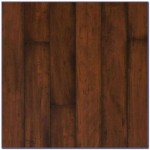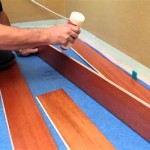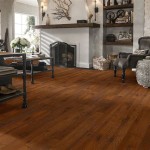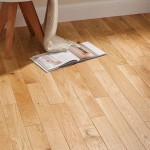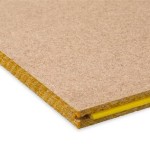What Do You Put Under Vinyl Plank Flooring In A Basement?
Installing vinyl plank flooring in a basement can be an excellent way to create a comfortable and stylish living space. It offers durability, moisture resistance, and aesthetic appeal, making it an ideal choice for a basement environment. However, preparing the subfloor is crucial for achieving a successful installation and ensuring the longevity of your vinyl plank flooring. This involves selecting the right underlayment, which plays a critical role in protecting the flooring and enhancing its performance.
Understanding Subfloor Preparation for Vinyl Plank Flooring
Before laying vinyl plank flooring, understanding the existing subfloor's condition is vital. Basements often have concrete floors, which can be uneven or have cracks, impacting the installation and overall appearance of the flooring. The primary goal of subfloor preparation is to create a smooth, even, and stable surface that provides adequate support for the vinyl planks and underlayment.
The best approach for subfloor preparation depends on the condition of the existing floor. Patching minor cracks and leveling out uneven areas may be sufficient for a relatively smooth subfloor. However, more extensive repairs may be needed for significant damage or unevenness. In such cases, specialized solutions like self-leveling concrete or plywood sheets can be used to create a suitable foundation.
Types of Underlayment for Basement Vinyl Plank Flooring
Underlayment serves as a protective barrier between the subfloor and the vinyl plank flooring, offering several benefits. It can help to:
- Level out minor irregularities: Underlayment can fill in small gaps and imperfections in the subfloor, creating a smoother surface for the vinyl planks.
- Reduce noise: It acts as a sound barrier, absorbing sound and minimizing noise transmission between floors.
- Provide insulation: Certain underlayment types offer thermal insulation, keeping the floor warmer in cold climates.
- Protect the flooring: It creates a cushioning effect, protecting the vinyl planks from impact damage and extending their lifespan.
There are various types of underlayment available, each with unique characteristics and suitability for different situations. Some common options include:
1. Foam Underlayment
Foam underlayment is a popular choice for its affordability, ease of installation, and sound-absorbing properties. It comes in different thicknesses and densities, offering varying levels of cushioning and insulation. However, it may not be the best option for areas with high moisture levels, as it can be susceptible to mold growth.
2. Cork Underlayment
Cork underlayment is known for its natural, sustainable properties and excellent sound insulation. It offers a comfortable walking surface and can help to create a more acoustically pleasing environment. However, it can be more expensive than other options and may not withstand heavy foot traffic as well.
3. Rubber Underlayment
Rubber underlayment offers superior durability and moisture resistance compared to foam or cork. It is excellent for areas with high foot traffic and moisture levels, making it a suitable choice for basements. However, it can be thicker and more challenging to install than other options, and it may not provide as much sound absorption as other types.
4. Moisture Barrier Underlayment
Moisture barrier underlayment is specifically designed to protect flooring from moisture damage. It typically consists of a waterproof membrane and a layer of foam or cork. This type of underlayment is essential in basements, where moisture levels can be high. It helps to prevent moisture from seeping through the subfloor and damaging the vinyl planks.
Factors to Consider When Choosing Underlayment
Several factors should be considered when choosing the right underlayment for your basement vinyl plank flooring:
1. Subfloor Condition
If your subfloor is relatively smooth and even, a thinner underlayment, such as foam or cork, may suffice. However, if the subfloor has significant imperfections or is uneven, a thicker underlayment, such as rubber or moisture-resistant foam, will be necessary to create a level surface.
2. Moisture Levels
Basements are prone to moisture, so choosing a moisture-resistant underlayment is crucial. Moisture barrier underlayment or rubber underlayment are suitable choices for basements with high moisture levels.
3. Noise Reduction
If you want to minimize noise transmission, consider underlayment with excellent sound-absorbing properties. Cork and rubber underlayment are known for their noise-reduction capabilities.
4. Budget
Underlayment costs vary depending on the type and thickness. Foam underlayment is typically the most affordable option, followed by cork and rubber. Moisture barrier underlayment can be more expensive, but it offers essential protection against moisture damage.

How To Install Vinyl Or Laminate Floors In A Basement Over Concrete Slab

Underlayment For Vinyl Flooring Best Options Home Pros

Tips For Installing Vinyl Plank Over Concrete Floors Lemon Thistle

Installing Vinyl Floors A Do It Yourself Guide The Honeycomb Home

Choosing The Right Vinyl Flooring For Your Basement

Vinyl Plank Flooring Installation Basement Remodel Before And After

Vinyl Plank Flooring Installation Basement Remodel Before And After

What Is A Moisture Barrier And When It Needed For Flooring Inc

What Kind Of Flooring Should I Use To Finish My Basement Ozburn Hessey

What Are The Best Flooring For Basement In Homes
Related Posts

